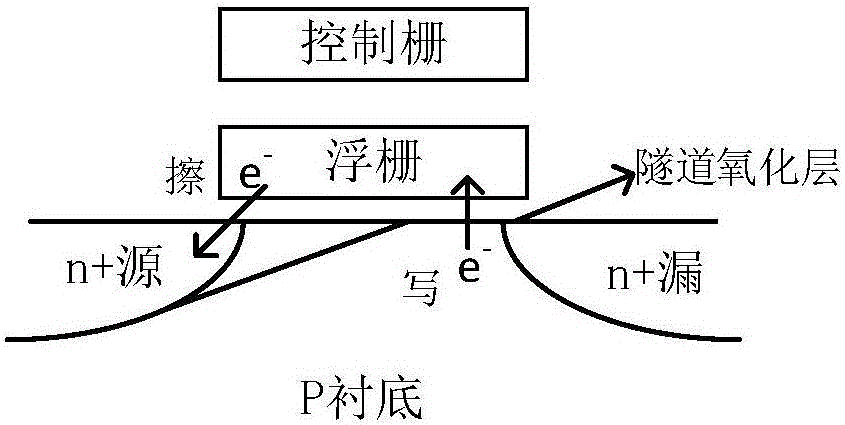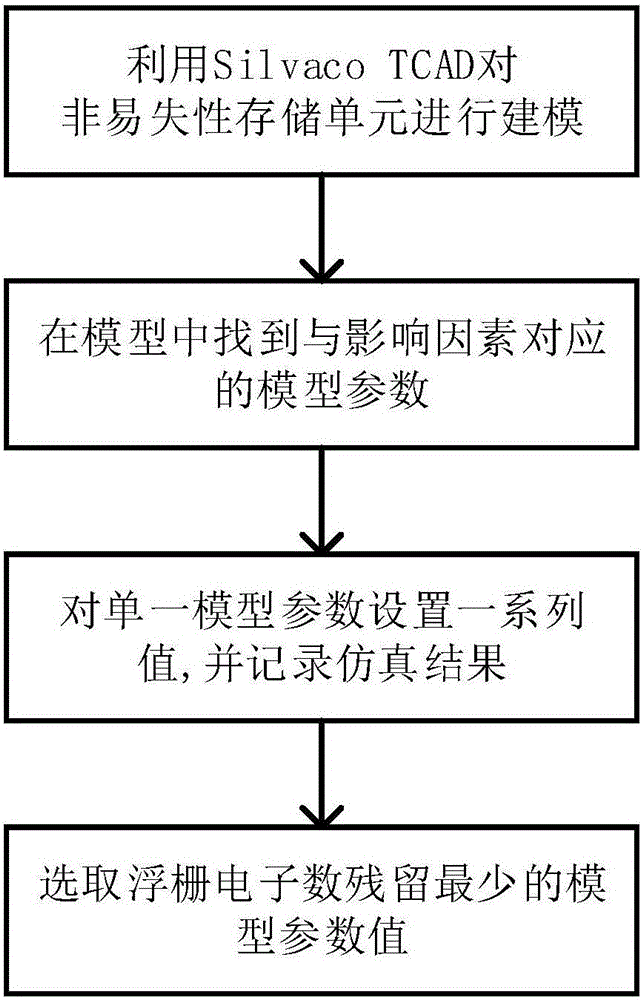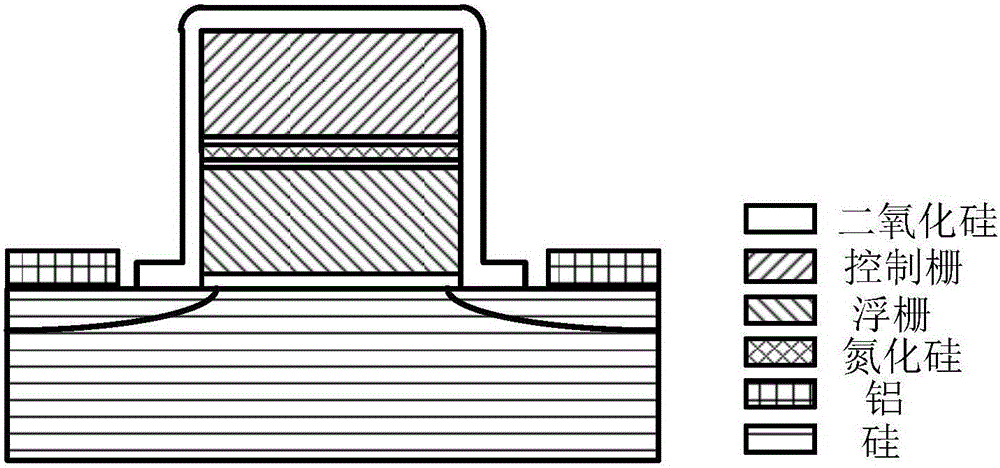Method for reducing data remanence in nonvolatile memory
A data residual and non-volatile technology, applied in the field of information security, can solve problems such as simulation verification, achieve a wide range of applications, and reduce data residual effects
- Summary
- Abstract
- Description
- Claims
- Application Information
AI Technical Summary
Problems solved by technology
Method used
Image
Examples
Embodiment Construction
[0034] The basic structure for storing data in non-volatile memory is the floating gate cell, such as figure 1 shown. The charge stored in the non-volatile memory cell structure is the floating gate. The floating gate sits between the control gate and the substrate and is surrounded by an insulating layer whose wide bandgap forms a barrier that prevents electrons from flowing into or out of the floating gate. The logic "0" and logic "1" states of a non-volatile memory cell can be distinguished based on the amount of negative charge on the floating gate, which is determined by the programming operation. Program operation is divided into write operation and erase operation. The write operation utilizes the hot electron injection effect of the channel, so that electrons flow into the floating gate, the negative charge on the floating gate increases, and the threshold voltage V of the transistor th Rising, higher than the gate-source voltage V applied during the read operation ...
PUM
| Property | Measurement | Unit |
|---|---|---|
| Thickness | aaaaa | aaaaa |
Abstract
Description
Claims
Application Information
 Login to View More
Login to View More - R&D Engineer
- R&D Manager
- IP Professional
- Industry Leading Data Capabilities
- Powerful AI technology
- Patent DNA Extraction
Browse by: Latest US Patents, China's latest patents, Technical Efficacy Thesaurus, Application Domain, Technology Topic, Popular Technical Reports.
© 2024 PatSnap. All rights reserved.Legal|Privacy policy|Modern Slavery Act Transparency Statement|Sitemap|About US| Contact US: help@patsnap.com










